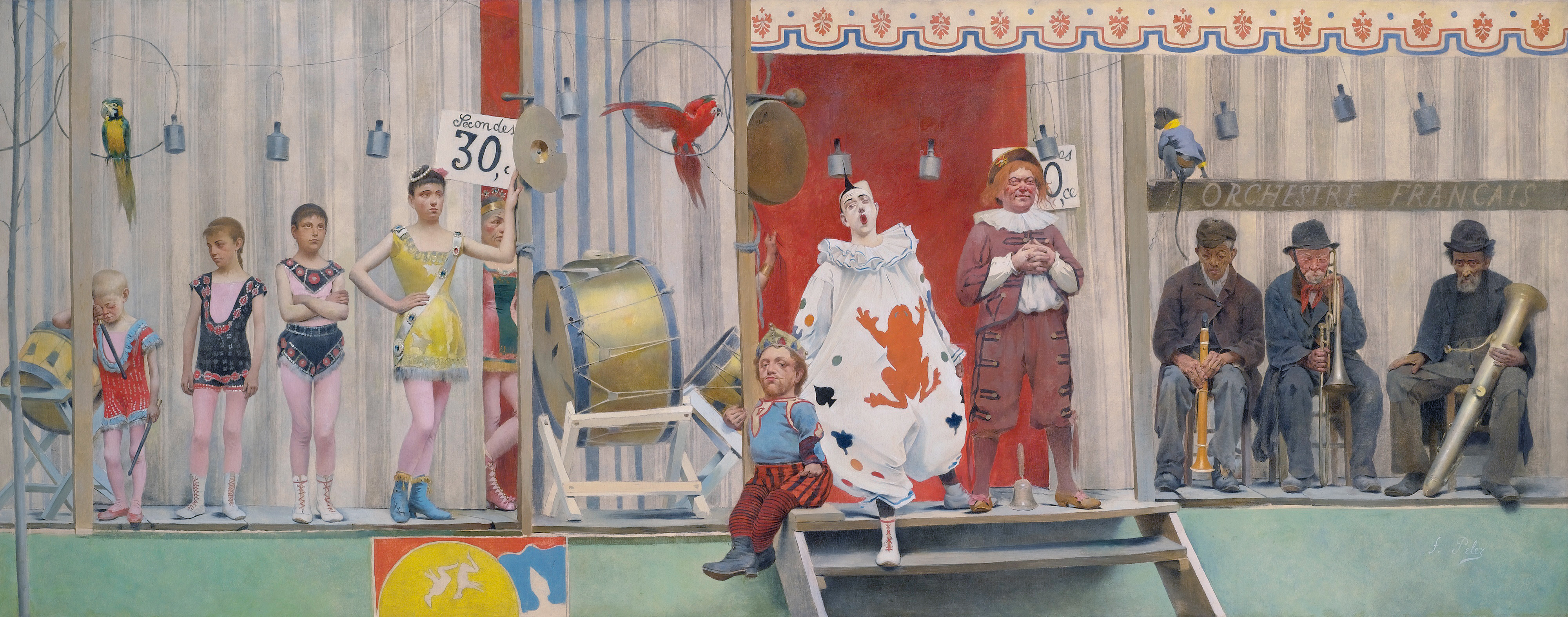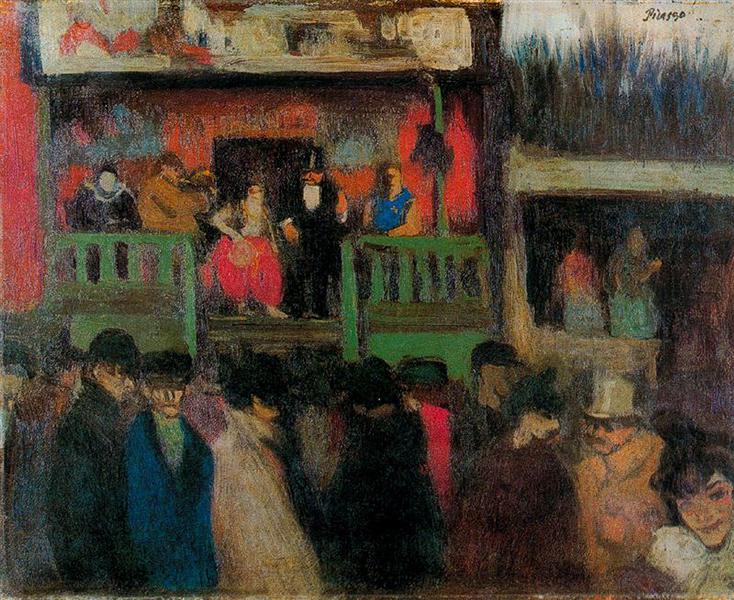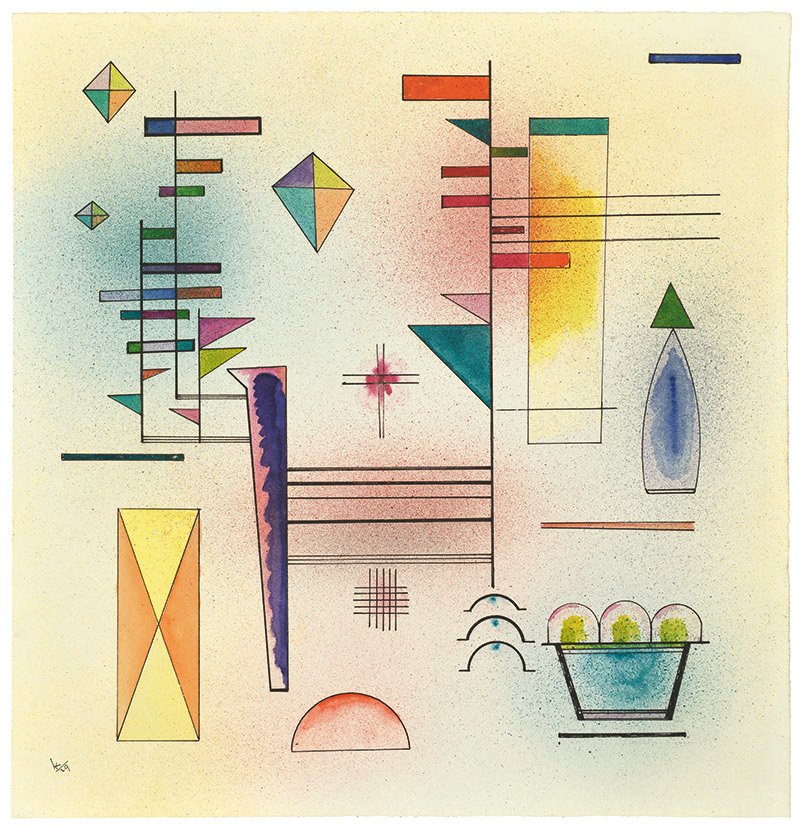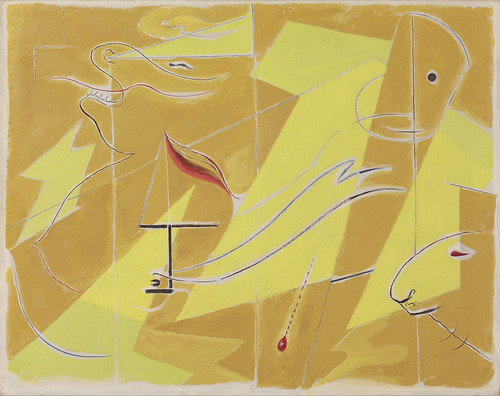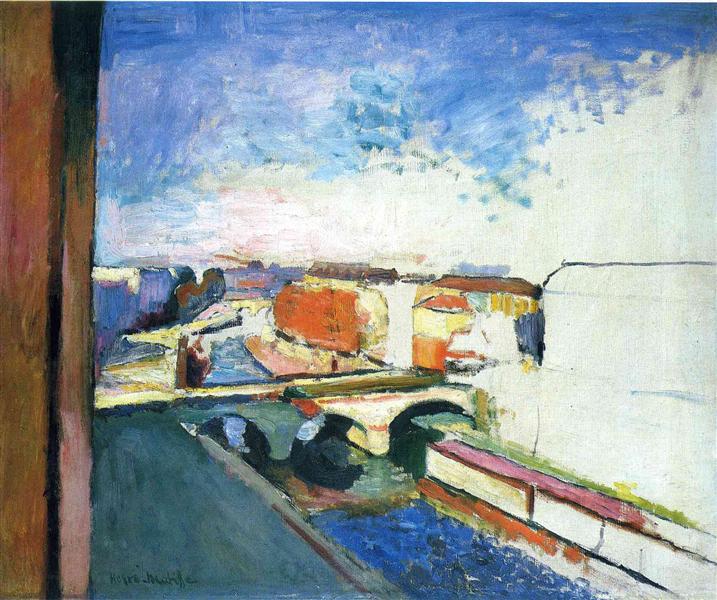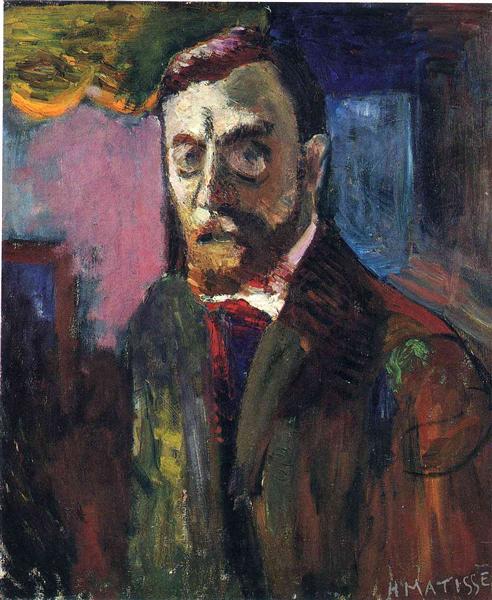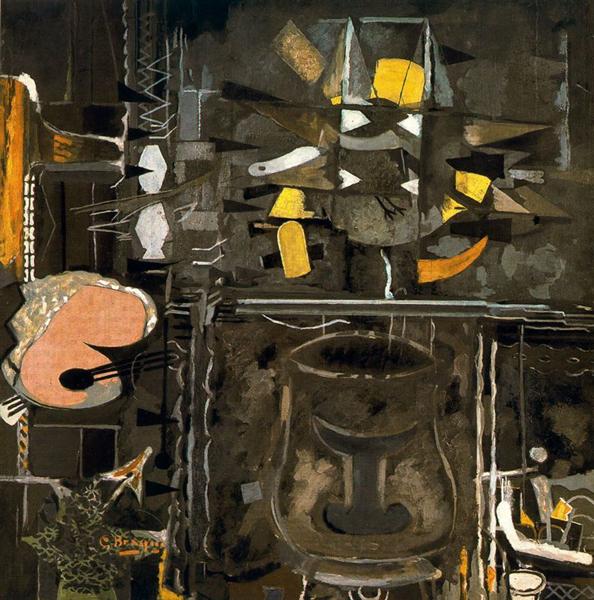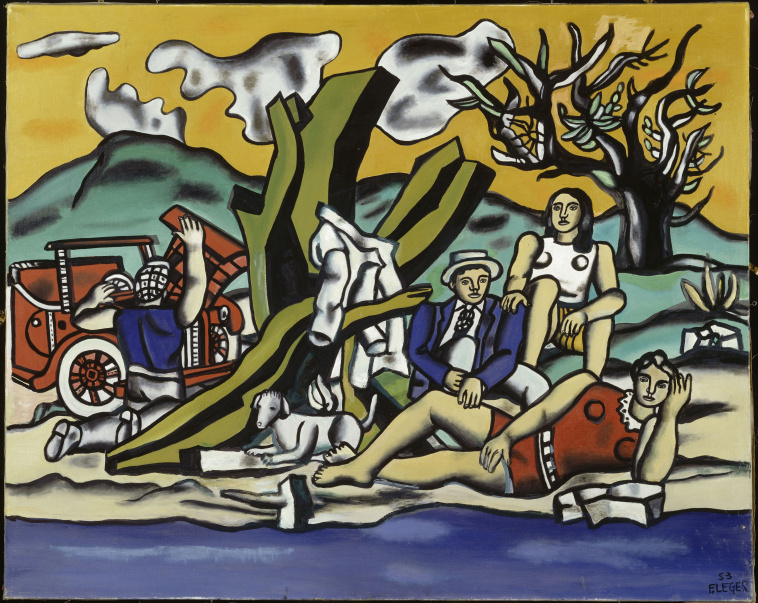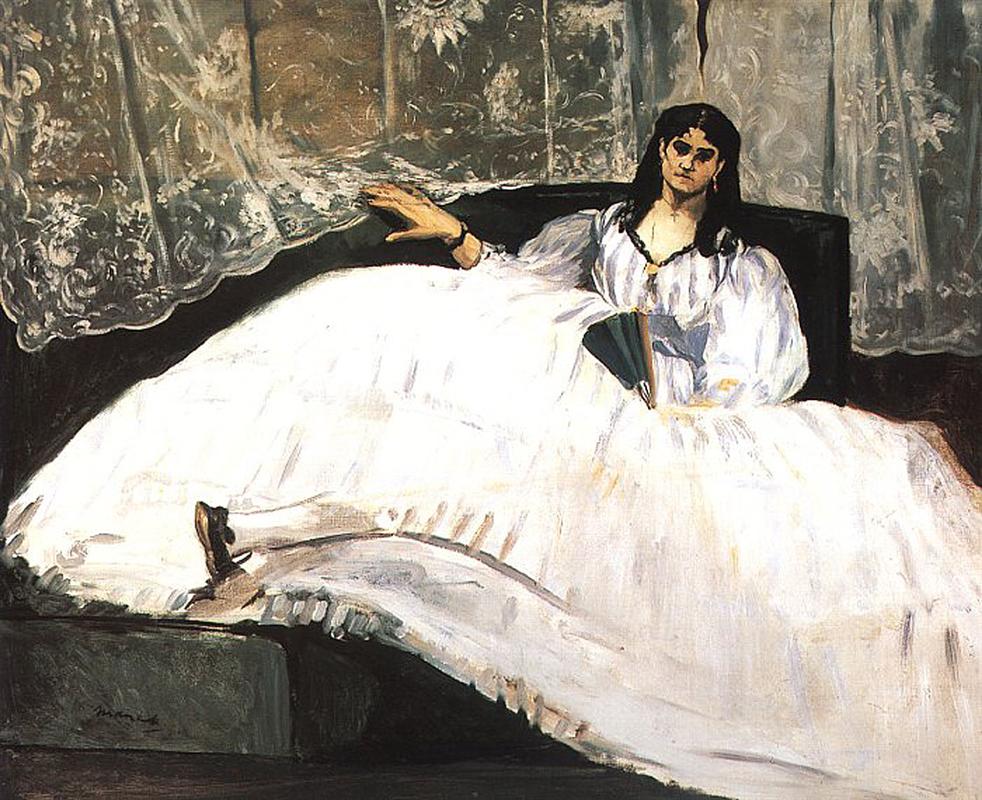Sunday, January 29, 2017
Seurat's Circus Sideshow
The Metropolitan Museum of Art, New York
February 17 to May 29, 2017
Taking as its focus one of The Met's most captivating masterpieces, this thematic exhibition affords a unique context for appreciating the heritage and allure of
Circus Sideshow (Parade de cirque), painted in 1887–88, by Georges Seurat (1859–91).
Anchored by a remarkable group of related works by Seurat that fully illuminates the lineage of the motif in his inimitable conté crayon drawings, the presentation explores the fascination the sideshow subject held for other artists in the 19th century, ranging from the great caricaturist Honoré Daumier at mid-century to the young Pablo Picasso at the fin de siècle.
This rich visual narrative unfolds in a provocative display of more than 100 paintings, drawings, prints, period posters, and illustrated journals, supplemented by musical instruments and an array of documentary material intended to give a vivid sense of the seasonal fairs and traveling circuses of the day.
Among the highlights is Fernand Pelez's epic Grimaces and Misery—The Saltimbanques (Petit Palais, Paris), of exactly the same date as Seurat's magisterial work and, with its life-size performers aligned in friezelike formation across a 20-foot stage, a match for his ambition. Seurat's Circus Sideshow will be on view at The Metropolitan Museum of Art, New York, from February 17 to May 29, 2017.
Circus Sideshow is one of only a half-dozen major figure compositions that date to Seurat's short career. More compact in scale and more evocative in expression than his other scenes of modern life—which he regarded as "toiles de lutte" (canvases of combat)—the painting effectively announced the Neo-Impressionist's next line of attack on old guard turf, signaling a shift in focus away from the sunlit banks of the Seine to the heart of urban Paris.
Circus Sideshow initiated a final trio of works devoted to popular entertainment and led the fray as the first to tackle a nighttime setting with the benefit of his innovative technique, alternatively called pointillism or divisionism (the former term emphasizing the dotted brushwork, the latter, the theory behind separating, or dividing, color into discrete touches that would retain their integrity and brilliance). It was his singular experiment in painting outdoor, artificial illumination. The result is disarming. In relying on his finely tuned approach to evoke the effects of ethereal, penumbral light in this evening fairground scene of the Corvi Circus troupe and their public at the Gingerbread Fair in Paris, Seurat produced his most mysterious painting. From the time it debuted at the Salon des Indépendants in Paris in 1888, it has unfailingly intrigued, perplexed, and mesmerized its viewers. Seurat's closest associates, seemingly dumbstruck, largely confined their spare remarks to its novelty as a "nocturnal effect." The laconic artist never mentioned the picture.
Circus Sideshow depicts the free, teaser entertainment set up outside the circus tent to entice passersby to purchase tickets—known in French as a parade and loosely translated as the "come-on" or sideshow. At far right, customers queue up on the stairs to the box office. On the makeshift stage, under the misty glow of nine twinkling gaslights, five musicians, a ringmaster, and clown play to the assembled crowd of onlookers whose assorted hats add a wry and rhythmic note to the foreground of this austere and rigorously geometric composition. As viewers, we observe the show—as if from the rear of the audience, a part of the crowd.
Seurat took a raucous spectacle that depended on direct appeal, the banter of barkers and rousing music, jostling crowds, and makeshift structures, and he silenced the noise, rendered the staging taut and ordered, hieratic and symmetrical, exquisitely measured and classically calm. Enveloped by the hazy gloom of night, the players and public are presented with the solemnity of an ancient ritual.
For all its uncommon beauty and striking invention, Circus Sideshow courts conventions and associations that were commonplace in representations of the parade. Throughout the 19th century it had been a stock motif in popular print culture, notably for social and political caricature, where it became an acute device for parodying politicians, who like saltimbanques, are trying to sell something.
During the 1880s, the parade subject gained ground: it was given a contemporary edge by popular illustrators; it was painted with riveting descriptive detail by artists who sought success at the annual Paris Salon with works that had broad appeal; and it was mined, with spirited stylistic rivalry, by artists who jockeyed for position in the avant-garde. In the 1890s, the great era of the poster, the subject attracted a new wave of creative talents eager to establish their reputations through success in the commercial world. The poster was modern printing technology's extension of the time-honored parade; both functioned to pull the public into the show.
The presentation brings this rich illustrated history to bear on Seurat's Circus Sideshow in a context designed to elucidate the genesis of his composition and to puzzle out the sources and parallels for his haunting and enigmatic work.
The exhibition is organized chronologically, with Circus Sideshow at center stage. It will be displayed in tandem with 17 works by Seurat that exceptionally reunite the painting with the conté crayon drawings most closely related to his conception, including preparatory studies, independent sheets that trace his exploration of the motif, and the glorious café-concert drawings that were shown alongside the picture at the Salon des Indépendants in 1888. The same venue featured
Seurat's Models (Poseuses), now in The Barnes Foundation (and precluded from travel), which will be represented in the exhibition by the gemlike small version (private collection). This core group of works is seen with relation to contemporaneous images of the Corvi Circus and the Gingerbread Fair, offering a keen sense of time and place.
As the exhibition will highlight, through loans from nearly 50 public and private collections, Seurat's choice of subject attracted a steady stream of artists in the 19th century—from caricaturists, popular illustrators, and poster designers to painters of like ambition—determined to make their mark on the Paris art scene. Daumier, who set a powerful precedent at mid-century, is handsomely represented by satirical lithographs, as well as pithy paintings and watercolors that chart the saga of itinerant circus performers dependent on the fickle whims of the public. His pace-setting imagery and initiatives find a recurrent echo throughout the exhibition, which is punctuated by a veritable encore performance in the cast of players showcased in graphic works by Henri-Gabriel Ibels dating to the early 1890s.
The appeal the parade motif held for Seurat's Parisian contemporaries will be seen to great effect.In addition to works by other vanguard artists, such as Louis Anquetin, Emile Bernard, Pierre Bonnard, Jules Chéret, Louis Hayet, Lucien Pissarro, and Paul Signac, or those on the cusp, such as Jean-Louis Forain and Jean-François Raffaëlli, the presentation features recently rediscovered pictures shown in the Paris Salons of 1884 and 1885, long lost from sight by artists little-known today, as well as the unprecedented showing in the United States of Fernand Pelez's monumental Grimaces and Misery—The Saltimbanques (Petit Palais, Paris),(above) which was on view at the Salon of 1888, the same spring as Seurat's brooding masterpiece debuted at the Salon des Indépendants.
As a reminder that the "show goes on," the exhibition ends with early works by two artists who continued to explore the parade and its timeless portrayal of the pathos of comic spectacle well into the 20th century:
Picasso's moody nighttime scene, Fairground Stall (Museu Picasso, Barcelona), painted on his first visit to Paris in 1900,
and Georges Rouault's bravura Sideshow (Parade) of ca. 1907–10 (Centre Pompidou, Musée National d'Art Moderne, Paris).
Seurat's Circus Sideshow may be seen as the natural successor to exhibitions that have had as their focus other great paintings by the Neo-Impressionist artist: Seurat and The Bathers in 1997 at the National Gallery, London, and Seurat and the Making of La Grande Jatte at The Art Institute of Chicago in 2004. The scale and scope of The Met's presentation have been tailored to vivify a painting that is smaller in size and highly evocative in subject.
The current one-venue show may also be appreciated with relation to other recent projects, such as Cézanne's Card Players (2011), Madame Cézanne (2014–15), and Van Gogh: Irises and Roses (2015) that have likewise furnished a fresh context for appreciating the heritage of best-known and loved 19th-century paintings in The Met's collection.
Exhibition Credits and Related Information
Seurat's Circus Sideshow is organized by Susan Alyson Stein, Engelhard Curator of Nineteenth-Century European Painting, Department of European Paintings, The Metropolitan Museum of Art, and guest curator Richard Thomson, Watson Gordon Professor of Fine Art at the University of Edinburgh, with the assistance of Laura D. Corey, Research Assistant, Department of European Paintings, The Metropolitan Museum of Art.
It will be accompanied by a catalogue published by The Metropolitan Museum of Art and distributed by Yale University Press.
Saturday, January 28, 2017
Picasso, Braque, Juan Gris, Léger, Klee, Kandinsky: The Collection of Hermann and Margrit Rupf:
November 11, 2016, to April 23, 2017
Curators: Susanne Friedli, Hermann and Margrit Rupf Foundation, and Petra Joos, Guggenheim Museum Bilbao
The Guggenheim Museum Bilbao is presenting The Collection of Hermann and Margrit Rupf. This exhibition brings together 70 works by key artists in the history of art during the first half of the 20th century, including Pablo Picasso, Georges Braque, Juan Gris, Fernand Léger, Paul Klee, and Vasily Kandinsky, in dialogue with works by contemporary artists dating from the second half of the 20th century until today.
In 1963, one year after the death of Hermann Rupf, the Foundation managed to purchase Henri Laurens’s 1918 work Fruit Bowl and Pipe (Compotier et pipe) to complete its already extensive group of sculptures and works on paper by this artist. In 1964, a relief by Hans Arp was purchased (Gallery 307).
In 1964, a relief by Hans Arp was purchased (Gallery 3 07). In the 1990’s, the existing collection was expanded with works by American artists as Donald Judd (Gallery 307), Joseph Kosuth, Brice Marden, Ad Reinhard, and James Turrell, and European artists as Piero Manzoni (Gallery 307), Enrico Castellani (Gallery 307), Lucio Fontana (Gallery 307), and Christian Megert (Gallery 307) , among others.
A group of works representing Minimalism and the ZERO Movement was also acquired, which today remains a fascinating continuation of the Rupfs’ original collection, since in the early days of their collecting we can see an undeniable preference for the tradition ofconstructivist and conceptual art.
The creation of the Rupf Foundation guaranteed that the collection would be conserved, consolidat ed and expan ded. Th e Foundation still focuses on the most recent contemporary art without losing sight of the core of the collection, comprised of the wonderful works of art gathered by Rupf. This exhibition reveals the coherence and evolution of the Collection of Hermann and Margrit Rupf as a reflection of the art of their day.
This is the first time that this collection has travelled to Spain, with an extensive selection of works rendered between 1907 and 2016.
TOUR OF THE EXHIBITION
Gallery 3 5 This gallery displays some of the first paintings that Hermann Rupf purchased between 1907 and 1908 from the Parisian gallery owned by his friend Daniel-Henry Kahnweiler . They include the three portraits of Kahnweiler painted by Picasso in 1957, all of which are on display in this exhibition. Both Rupf and Kahnweiler were trained at the Commerz und Disconto Bank in Frankfurt. While Kahnweiler continued his training as an intern at a stock broker age firm in Paris from 1902 to 1904, Rupf began to work at the company Jacques Meyer Fils & Cie (currently Galleries Lafayette). From the very start, the two shared an interest in literature and music, and th ey both attended a host of theatre performances and concerts. Fascinated by both classical and modern art , they spent a great deal of time at the Louvre and in different galleries .
After yet another sojourn abroad, this time in London, Rupf returned to his hometown of Bern started to work at the mercery and haberdashery owned by his brother -in- law, Ruedi Hossmann, where he became a co -proprietor in 1908. Thereafter the company was known as “Hossmann & Rupf .” After marrying Margrit Rupf in 1910, he tended to heed his own judgement when purchasing the works in his collection, al though his Paris art dealer and personal friend Daniel -Henry Kahnweiler played a key role in shaping the collection.
Thanks to his gallery, Rupf was able to boost his collection with of works by Fernand Léger (Gallery 306), Juan Gris (Gallery 306), and later André Masson. As attested to in the almost 800 letters still conserved, Hermann Rupf and Kahnweiler enjoyed a life-long friendship .
On Rupf’s business trips to Paris to expand his assortment of mercery and haberdashery goods with fashion accessories, he would meet with Kahnweiler in his gallery and sometimes accompany him on his visits to artists. As early as 1907 , Rupf began to purchase works by Pablo Picasso, Georges Braque, and the artists of Fauvism, such as Othon Friesz and André Derain.
Curators: Susanne Friedli, Hermann and Margrit Rupf Foundation, and Petra Joos, Guggenheim Museum Bilbao
The Guggenheim Museum Bilbao is presenting The Collection of Hermann and Margrit Rupf. This exhibition brings together 70 works by key artists in the history of art during the first half of the 20th century, including Pablo Picasso, Georges Braque, Juan Gris, Fernand Léger, Paul Klee, and Vasily Kandinsky, in dialogue with works by contemporary artists dating from the second half of the 20th century until today.
- Hardly any time went by between the creation of works by artists like Picasso, Braque, and Derain and their acquisition by Hermann Rupf, who was personally involved with these artists at the beginning of their careers.
- The Rupfs were close friends with artists like Vasily Kandinsky and Paul Klee, who gave Hermann and Margrit Rupf dedicated works on important occasions like birthdays and Christmas.
- Even today, the Rupf Foundation strives to expand the collection with the most recent contemporary art without losing sight of the core of the art collection that the couple amassed over their lifetime.
- This is the first time that this collection, consisting of an extensive selection of works rendered between 1907 and 2016, is travelling to Spain.
In 1963, one year after the death of Hermann Rupf, the Foundation managed to purchase Henri Laurens’s 1918 work Fruit Bowl and Pipe (Compotier et pipe) to complete its already extensive group of sculptures and works on paper by this artist. In 1964, a relief by Hans Arp was purchased (Gallery 307).
In 1964, a relief by Hans Arp was purchased (Gallery 3 07). In the 1990’s, the existing collection was expanded with works by American artists as Donald Judd (Gallery 307), Joseph Kosuth, Brice Marden, Ad Reinhard, and James Turrell, and European artists as Piero Manzoni (Gallery 307), Enrico Castellani (Gallery 307), Lucio Fontana (Gallery 307), and Christian Megert (Gallery 307) , among others.
A group of works representing Minimalism and the ZERO Movement was also acquired, which today remains a fascinating continuation of the Rupfs’ original collection, since in the early days of their collecting we can see an undeniable preference for the tradition ofconstructivist and conceptual art.
The creation of the Rupf Foundation guaranteed that the collection would be conserved, consolidat ed and expan ded. Th e Foundation still focuses on the most recent contemporary art without losing sight of the core of the collection, comprised of the wonderful works of art gathered by Rupf. This exhibition reveals the coherence and evolution of the Collection of Hermann and Margrit Rupf as a reflection of the art of their day.
This is the first time that this collection has travelled to Spain, with an extensive selection of works rendered between 1907 and 2016.
TOUR OF THE EXHIBITION
Gallery 3 5 This gallery displays some of the first paintings that Hermann Rupf purchased between 1907 and 1908 from the Parisian gallery owned by his friend Daniel-Henry Kahnweiler . They include the three portraits of Kahnweiler painted by Picasso in 1957, all of which are on display in this exhibition. Both Rupf and Kahnweiler were trained at the Commerz und Disconto Bank in Frankfurt. While Kahnweiler continued his training as an intern at a stock broker age firm in Paris from 1902 to 1904, Rupf began to work at the company Jacques Meyer Fils & Cie (currently Galleries Lafayette). From the very start, the two shared an interest in literature and music, and th ey both attended a host of theatre performances and concerts. Fascinated by both classical and modern art , they spent a great deal of time at the Louvre and in different galleries .
After yet another sojourn abroad, this time in London, Rupf returned to his hometown of Bern started to work at the mercery and haberdashery owned by his brother -in- law, Ruedi Hossmann, where he became a co -proprietor in 1908. Thereafter the company was known as “Hossmann & Rupf .” After marrying Margrit Rupf in 1910, he tended to heed his own judgement when purchasing the works in his collection, al though his Paris art dealer and personal friend Daniel -Henry Kahnweiler played a key role in shaping the collection.
Thanks to his gallery, Rupf was able to boost his collection with of works by Fernand Léger (Gallery 306), Juan Gris (Gallery 306), and later André Masson. As attested to in the almost 800 letters still conserved, Hermann Rupf and Kahnweiler enjoyed a life-long friendship .
On Rupf’s business trips to Paris to expand his assortment of mercery and haberdashery goods with fashion accessories, he would meet with Kahnweiler in his gallery and sometimes accompany him on his visits to artists. As early as 1907 , Rupf began to purchase works by Pablo Picasso, Georges Braque, and the artists of Fauvism, such as Othon Friesz and André Derain.
Pablo Picasso (Málaga, Spain, 1881 –Mougins, France, 1973) Head of a Man ( Tête d‘homme ), 1908 Oil on wood 27 x 21 cm Hermann und Margrit Rupf -Stiftung, Kunstmuseum Bern © Sucesión Pablo Picasso, VEGAP, Madrid, 2016.
One of his first purchases was Head of a Man ( Tête d’homme ) by Picasso from
1908,
as well as the Georges Braque work Houses at L’Estaque ( Maisons à l’Estaque ).
The latter painting had been carried by the artist directly from L’Estaque, a town in southern France where he had lived for a period , to what would be his first major exhibition in Kahnweiler’s gallery. In the ensuing years, Rupf gradually expanded his collection with works by Picasso, Braque, André Derain, Juan Gris , and Maurice de Vlaminck.
Until the outbreak of World War I, his collection kept growing to becom e a select set of almost 30 works, most of them Cubist. When the war broke out, the Parisian gallery owner accepted Rupf’s invitation to stay in Bern until it ended. During his exile, Kahnweiler wrote several texts on philosophy and art theory and forged relationships with major figures of the period, including Hans Arp, who was living in Zurich at the time
(Gallery 307). The work in this gallery by Florian Slotawa, Bernese Pedestals ( Berner Sockel ), from 2010, deserves special mention. The artist carefully studied the Collection of Hermann and Margrit Rupf, as well as its history, and he chose four sculptures: Leaf -Torso ( Blatt -Torso , 1963) by Hans Arp, Margrit Rupf - Wirz (1922) by Max Fueter , Kneeling Nude (Nu agenouillé , 1929) by Henri Laurens, and Lying Cow (Liegende Kuh , 1925) by Ewald Mataré. For each of these four pieces, which are representative of the Rupf Collection, Slotawa designed with a pedestal made with furnishings that were originally found in the collectors’ home.
Gallery 306 In the years after the Great War, the Rupf s were able to resume the expansion of their collection. In the early 1920’s, they added the latest works by Georges Braque (Gallery 305), André Derain (Gallery 305), Juan Gris (Gallery 206), Henri Laurens (Gallery 306), Fernand Léger (Gallery 306), Paul Klee (Gallery 307) , and Louis Moillet (Gallery 307.
Just like prior to the war, during this period hardly any time elapsed between the creation of the works a nd their acquisition by the Rupfs. At that point, Kahnweiler did not manage to keep all the artists with which he worked before the war at his gallery. However, he soon landed new artists such as Paul Klee, whom he represented abroad in 1933 thanks to Rupf’s mediation. In this gallery, you can see the artistic evolution of Juan Gris from 1913 until 1925,
along with a work by Picasso also from 1913, Violin Hanging on the wall ( Violin) [ Un violon accroché au mur ( Le violon )]
He also forged ties with other artists, such as Fernand Léger in Contrasts of Forms Contrastes de formes), also from 1913, and Henri Laurens, whose works in this exhibition illustrate part of the evolution of his sculptural oeuvre; after his early days as a Cubist, Laurens shifted to working with voluminous forms and the female figure.
Untitled No. 85 –065 (1985) by Donald Judd is an abstract sculpture made of aluminum mounted on the wall ; it is part of a series of modular works in bright colors crafted between 1983 and 1990. All the modules are the same height, depth , and width, and in them the artist deliberately tried to avoid combinations of “harmonious” or “dissonant” colors.
Gallery 307 The Rupfs were close friends with Paul and Lily Klee, and after 1913 they regularly acquired works from Klee. Paul Klee moved back to Bern a fter the closure of the Bauhaus Dessau, where he taught, because the Nazis regarded him as a “degenerate painter .” One clear illustration of their close friendship is the fact that the artist gave Hermann and Margrit Rupf dedicated works on important occasions like birthdays and Christmas. Likewise, the Rupfs were also patrons of many artists, scientists , and musicians in the city of Bern.
Hermann Rupf was an active art critic and played a prominent role in nurturing the taste for contemporary art. Between 1909 and 1931, he wrote criticism for the Social Democratic weekly Berner Tagwacht which was targeted at the conservative cultural policy of the era and called for a greater understanding of contemporary art.
Rupf purchased a series of drawings directly from Klee for the first time in 1914, and between 1931 and 1933 he belonged to the Klee Society, created in the 1920’s to guarantee the artist additional income by contributions of at least 50 Imperial Marks in exchange for the privilege of being able to purchase works from the artist under special conditions.
By 1940, when Klee died after a long illness, the Rupfs owned 26 of his works. From then on, the artist’s widow, Lily Klee, was in charge of his legacy, from which Rupf purchased another 17 works until her death in 1946. Thanks to their relationship with Klee, in the early 1930’s the Rupfs met Vasily Kandinsky and his wife, Nina.
Just like Klee, Kandinsky had also been a teacher at the Bauhaus Dessau. The Kandinskys and Rupfs met in 1933, although initially they were brought together not so much over art but because of Rupf’s economic assistance.
In 1934, Kandinsky gave his “Swiss financial advisor” the watercolor he titled Sonorous (Klangvoll, 1929) to show his appreciation for Rupf’ s help. In the ensuing years, the two couples became close friends, and the Rupfs remained close with Nina Kandinsky even after her husband ’s death in 1944. Sixteen of his works (five of which can be seen in this gallery) reached the Collection of Hermann and Margrit Rupf, not without difficulties, since during the artist’s lifetime they had only purchased one painting in the autumn of 1935,
Calm Tension (Tension tranquille), painted that same year. The works displayed in the exhibition date from 1916 to 1940 and encompass Kandinsky’s oeuvre from his temporary return to Russia until his later works in Paris.
The collection harbors two special works that Rupf purchased in 1939 in a historical auction of “paintings and sculptures by modern masters from German Museums” —regarded as “degenerate art” —held in Lucerne. At first, Rupf expressed his doubts to Kahnweiler , as hinted at by his own words: “With regard to the sale of German paintings in Lucerne, “ I am of the opinion that no one should bid so that that gang w ill have no more expenses and w ill sell nothing. That would be wonderful. Or, if possible, all the paintings should be purchased at rock -bottom prices, with no high bids. But this can’t be arranged in advance.”
Despite his initial qualms, he ultimately bought two works,
Garden Restaurant ( Gartenrestaurant , 1912) by August Macke
and Lying Cow (Liegende Kuh , 1925) by Ewald Mataré (Gallery 305). This purchase was particularly valuable to Rupf, since his three best “artist friends” were now represented in his collection —Klee, Macke, and Moillet —with whom he had taken a celebrated trip to Tunis in 1914. In this gallery, we can see that the Rupf collection as it stood as not supposed to be viewed as complete; instead , it had to continue to evolve. Works by Hans Arp, Meret Oppenheim, Lucio Fontana, and the ZERO Group, among others, close and complete the show.
Hermann Rupf repeatedly supported the local art scene, often despite his own personal concerns and fears. He regularly provided financing to different creators, and his commitment to the public soon led him to lend paintings from his collection. In the mid-1930’s, the Rupfs began to ponder where their collection should go so that it could be displayed in public. Almost 20 years later, in 1954, they finally managed to create the Hermann and Margrit Rupf Foundation.
In 1956, the collection was catalogued and displayed in the Kunstmuseum Bern for the first time. In the early years, Hermann Rupf kept careful watch over the Foundation’s activities , and even considered the possibility of selling some of its works. In 1961 , Margrit Rupf died, and her husband followed her one year later. From that time on, the responsibility for new acquisitions shifted to the Board.
After the founders’ deaths in the early 1960’s, the Hermann and Magrit Rupf Collection belonging to the Hermann and Margrit Rupf Foundation, made up of 41 paintings, 14 sculptures, 23 drawings, 149 prints , and 32 books containing original engravings was deposited at the Kunstmuseum Bern. The Rupfs also left the rest of their assets to the Foundation as well, thus guaranteeing that it could continue to acquire new art works in the future.
Without losing sight of the impressive core collection of art works assembled by the Rupfs, the Foundation continues to expand the collection today with more recent works of contemporary art.
Pablo Picasso (Málaga, Spain, 1881 – Mougins, France, 1973) Portrait of D.-H. Kahnweiler II, 1957 Lithography 65 x 49 cm Hermann und Margrit Rupf -Stiftung, Kunstmuseum Bern © Sucesión Pab lo Picasso, VEGAP, Madrid, 2016
André Derain (Chatou, France, 1880 –Garches, France, 1954) Landscape near Cassis ( Paysage aux environs de Cassis ), 1907 Oil on canvas 33x 41cm Hermann und Margrit Rupf -Stiftung, Kunstmuseum Bern © An dré Derain, VEGAP, Bilbao, 2016
Georges Braque (Argenteuil -sur -Seine, France , 1882 –Pari s, 1963) Violin and Bow (Violon et archet), 1911 Oil on canvas 46 x 33 cm Hermann und Margrit Rupf -Stiftung, Kunstmuseum Bern © Geor ges Braque, VEGAP, Bilbao, 2016
Juan Gris (Madrid, 1887 –Boulogne -Billancourt, France, 1927) Book and Pipe ( Livre et pipe ), 1925 Oil on canvas 27 x 35 cm Hermann und Margrit Rupf -Stiftung, Kunstmuseum Bern
Fernand Léger ( Argentan, France , 1881 – Gif - sur - Yvette, France , 1955 ) Still Life (Nature morte), 1922 Oil on canvas 65 x 50 cm Hermann und Margrit Rupf -Stiftung, Kunstmuseum Bern © Fer nand Léger, VEGAP, Bilbao, 2016
Paul Klee (Münchenbuchsee, Switzerland, 1879 –Muralto, Switzerland, 1940) Full Moon in the Garden ( Vollmond im Garten ), 1934 Oil on primed canvas 50 .3 x 60 .1 cm Hermann und Margrit Rupf -Stiftung, Kunstmuseum Bern © Paul Klee ’s Estate/VEGAP, 2016
Vasily Kandinsky (Moscow , 1866 –Neuilly -sur -Seine, Franc e, 1944) Split Horizontal (Horizontale divisée ), 1935 Watercolor, ink, and pencil on paper 35 x 54 cm Hermann und Margrit Rupf -Stiftung, Kunstmuseum Bern © Vasily Kandi nsky, VEGAP, Bilbao, 2016
André Masson ( Balagny -sur -Thérain, Franc e, 1896 –Par is, 1987 ) Beheaded Ox (Le bœuf égorgé), 1930 Oil on canvas 65 x 81 cm Hermann und Margrit Rupf -Stiftung, Kunstmuseum Bern © André Masson, VEGAP, Bilbao, 2016
as well as the Georges Braque work Houses at L’Estaque ( Maisons à l’Estaque ).
The latter painting had been carried by the artist directly from L’Estaque, a town in southern France where he had lived for a period , to what would be his first major exhibition in Kahnweiler’s gallery. In the ensuing years, Rupf gradually expanded his collection with works by Picasso, Braque, André Derain, Juan Gris , and Maurice de Vlaminck.
Until the outbreak of World War I, his collection kept growing to becom e a select set of almost 30 works, most of them Cubist. When the war broke out, the Parisian gallery owner accepted Rupf’s invitation to stay in Bern until it ended. During his exile, Kahnweiler wrote several texts on philosophy and art theory and forged relationships with major figures of the period, including Hans Arp, who was living in Zurich at the time
(Gallery 307). The work in this gallery by Florian Slotawa, Bernese Pedestals ( Berner Sockel ), from 2010, deserves special mention. The artist carefully studied the Collection of Hermann and Margrit Rupf, as well as its history, and he chose four sculptures: Leaf -Torso ( Blatt -Torso , 1963) by Hans Arp, Margrit Rupf - Wirz (1922) by Max Fueter , Kneeling Nude (Nu agenouillé , 1929) by Henri Laurens, and Lying Cow (Liegende Kuh , 1925) by Ewald Mataré. For each of these four pieces, which are representative of the Rupf Collection, Slotawa designed with a pedestal made with furnishings that were originally found in the collectors’ home.
Gallery 306 In the years after the Great War, the Rupf s were able to resume the expansion of their collection. In the early 1920’s, they added the latest works by Georges Braque (Gallery 305), André Derain (Gallery 305), Juan Gris (Gallery 206), Henri Laurens (Gallery 306), Fernand Léger (Gallery 306), Paul Klee (Gallery 307) , and Louis Moillet (Gallery 307.
Just like prior to the war, during this period hardly any time elapsed between the creation of the works a nd their acquisition by the Rupfs. At that point, Kahnweiler did not manage to keep all the artists with which he worked before the war at his gallery. However, he soon landed new artists such as Paul Klee, whom he represented abroad in 1933 thanks to Rupf’s mediation. In this gallery, you can see the artistic evolution of Juan Gris from 1913 until 1925,
Pablo Picasso ( Málaga, Spain, 1881 – Mougins, France, 1973) Violin Hanging on a Wall (The Violin) ( Un violon accroché au mur [Le violon ] ), 1913 Oil and sand on canvas 65 x 46 cm Hermann und Margrit Rupf -Stiftung, Kunstmuseum Bern © Sucesión Pablo Picasso, VEGAP, Madrid, 2016
along with a work by Picasso also from 1913, Violin Hanging on the wall ( Violin) [ Un violon accroché au mur ( Le violon )]
He also forged ties with other artists, such as Fernand Léger in Contrasts of Forms Contrastes de formes), also from 1913, and Henri Laurens, whose works in this exhibition illustrate part of the evolution of his sculptural oeuvre; after his early days as a Cubist, Laurens shifted to working with voluminous forms and the female figure.
Untitled No. 85 –065 (1985) by Donald Judd is an abstract sculpture made of aluminum mounted on the wall ; it is part of a series of modular works in bright colors crafted between 1983 and 1990. All the modules are the same height, depth , and width, and in them the artist deliberately tried to avoid combinations of “harmonious” or “dissonant” colors.
Gallery 307 The Rupfs were close friends with Paul and Lily Klee, and after 1913 they regularly acquired works from Klee. Paul Klee moved back to Bern a fter the closure of the Bauhaus Dessau, where he taught, because the Nazis regarded him as a “degenerate painter .” One clear illustration of their close friendship is the fact that the artist gave Hermann and Margrit Rupf dedicated works on important occasions like birthdays and Christmas. Likewise, the Rupfs were also patrons of many artists, scientists , and musicians in the city of Bern.
Hermann Rupf was an active art critic and played a prominent role in nurturing the taste for contemporary art. Between 1909 and 1931, he wrote criticism for the Social Democratic weekly Berner Tagwacht which was targeted at the conservative cultural policy of the era and called for a greater understanding of contemporary art.
Rupf purchased a series of drawings directly from Klee for the first time in 1914, and between 1931 and 1933 he belonged to the Klee Society, created in the 1920’s to guarantee the artist additional income by contributions of at least 50 Imperial Marks in exchange for the privilege of being able to purchase works from the artist under special conditions.
By 1940, when Klee died after a long illness, the Rupfs owned 26 of his works. From then on, the artist’s widow, Lily Klee, was in charge of his legacy, from which Rupf purchased another 17 works until her death in 1946. Thanks to their relationship with Klee, in the early 1930’s the Rupfs met Vasily Kandinsky and his wife, Nina.
Just like Klee, Kandinsky had also been a teacher at the Bauhaus Dessau. The Kandinskys and Rupfs met in 1933, although initially they were brought together not so much over art but because of Rupf’s economic assistance.
In 1934, Kandinsky gave his “Swiss financial advisor” the watercolor he titled Sonorous (Klangvoll, 1929) to show his appreciation for Rupf’ s help. In the ensuing years, the two couples became close friends, and the Rupfs remained close with Nina Kandinsky even after her husband ’s death in 1944. Sixteen of his works (five of which can be seen in this gallery) reached the Collection of Hermann and Margrit Rupf, not without difficulties, since during the artist’s lifetime they had only purchased one painting in the autumn of 1935,
Calm Tension (Tension tranquille), painted that same year. The works displayed in the exhibition date from 1916 to 1940 and encompass Kandinsky’s oeuvre from his temporary return to Russia until his later works in Paris.
The collection harbors two special works that Rupf purchased in 1939 in a historical auction of “paintings and sculptures by modern masters from German Museums” —regarded as “degenerate art” —held in Lucerne. At first, Rupf expressed his doubts to Kahnweiler , as hinted at by his own words: “With regard to the sale of German paintings in Lucerne, “ I am of the opinion that no one should bid so that that gang w ill have no more expenses and w ill sell nothing. That would be wonderful. Or, if possible, all the paintings should be purchased at rock -bottom prices, with no high bids. But this can’t be arranged in advance.”
Despite his initial qualms, he ultimately bought two works,
Garden Restaurant ( Gartenrestaurant , 1912) by August Macke
and Lying Cow (Liegende Kuh , 1925) by Ewald Mataré (Gallery 305). This purchase was particularly valuable to Rupf, since his three best “artist friends” were now represented in his collection —Klee, Macke, and Moillet —with whom he had taken a celebrated trip to Tunis in 1914. In this gallery, we can see that the Rupf collection as it stood as not supposed to be viewed as complete; instead , it had to continue to evolve. Works by Hans Arp, Meret Oppenheim, Lucio Fontana, and the ZERO Group, among others, close and complete the show.
Hermann Rupf repeatedly supported the local art scene, often despite his own personal concerns and fears. He regularly provided financing to different creators, and his commitment to the public soon led him to lend paintings from his collection. In the mid-1930’s, the Rupfs began to ponder where their collection should go so that it could be displayed in public. Almost 20 years later, in 1954, they finally managed to create the Hermann and Margrit Rupf Foundation.
In 1956, the collection was catalogued and displayed in the Kunstmuseum Bern for the first time. In the early years, Hermann Rupf kept careful watch over the Foundation’s activities , and even considered the possibility of selling some of its works. In 1961 , Margrit Rupf died, and her husband followed her one year later. From that time on, the responsibility for new acquisitions shifted to the Board.
After the founders’ deaths in the early 1960’s, the Hermann and Magrit Rupf Collection belonging to the Hermann and Margrit Rupf Foundation, made up of 41 paintings, 14 sculptures, 23 drawings, 149 prints , and 32 books containing original engravings was deposited at the Kunstmuseum Bern. The Rupfs also left the rest of their assets to the Foundation as well, thus guaranteeing that it could continue to acquire new art works in the future.
Without losing sight of the impressive core collection of art works assembled by the Rupfs, the Foundation continues to expand the collection today with more recent works of contemporary art.
Pablo Picasso (Málaga, Spain, 1881 – Mougins, France, 1973) Portrait of D.-H. Kahnweiler II, 1957 Lithography 65 x 49 cm Hermann und Margrit Rupf -Stiftung, Kunstmuseum Bern © Sucesión Pab lo Picasso, VEGAP, Madrid, 2016
André Derain (Chatou, France, 1880 –Garches, France, 1954) Landscape near Cassis ( Paysage aux environs de Cassis ), 1907 Oil on canvas 33x 41cm Hermann und Margrit Rupf -Stiftung, Kunstmuseum Bern © An dré Derain, VEGAP, Bilbao, 2016
Georges Braque (Argenteuil -sur -Seine, France , 1882 –Pari s, 1963) Violin and Bow (Violon et archet), 1911 Oil on canvas 46 x 33 cm Hermann und Margrit Rupf -Stiftung, Kunstmuseum Bern © Geor ges Braque, VEGAP, Bilbao, 2016
Juan Gris (Madrid, 1887 –Boulogne -Billancourt, France, 1927) Book and Pipe ( Livre et pipe ), 1925 Oil on canvas 27 x 35 cm Hermann und Margrit Rupf -Stiftung, Kunstmuseum Bern
Fernand Léger ( Argentan, France , 1881 – Gif - sur - Yvette, France , 1955 ) Still Life (Nature morte), 1922 Oil on canvas 65 x 50 cm Hermann und Margrit Rupf -Stiftung, Kunstmuseum Bern © Fer nand Léger, VEGAP, Bilbao, 2016
Paul Klee (Münchenbuchsee, Switzerland, 1879 –Muralto, Switzerland, 1940) Full Moon in the Garden ( Vollmond im Garten ), 1934 Oil on primed canvas 50 .3 x 60 .1 cm Hermann und Margrit Rupf -Stiftung, Kunstmuseum Bern © Paul Klee ’s Estate/VEGAP, 2016
Vasily Kandinsky (Moscow , 1866 –Neuilly -sur -Seine, Franc e, 1944) Split Horizontal (Horizontale divisée ), 1935 Watercolor, ink, and pencil on paper 35 x 54 cm Hermann und Margrit Rupf -Stiftung, Kunstmuseum Bern © Vasily Kandi nsky, VEGAP, Bilbao, 2016
André Masson ( Balagny -sur -Thérain, Franc e, 1896 –Par is, 1987 ) Beheaded Ox (Le bœuf égorgé), 1930 Oil on canvas 65 x 81 cm Hermann und Margrit Rupf -Stiftung, Kunstmuseum Bern © André Masson, VEGAP, Bilbao, 2016
Matisse in His Time: Masterworks of Modernism from the Centre Pompidou, Paris
Henri Matisse L'Algérienne, 1909 Huile sur toile, 81 x 65 cm Centre Georges Pompidou, Musée national d’art m oderne, AM 2009-214
© Succession H. Matisse / 2015, ProLitteris, Zurich / Photo © Centre
Pompidou, MNAM-CCI, Dist. RMN-Grand Palais / Philippe MigeatPablo Picasso L'atelier, 23 octobre 1955 Huile sur toile, 116 x 89 cm Centre Georges Pompidou, Musée national d’art moderne, AM 1984-636© Succession Picasso - Gestion droits d'auteur / 2015, ProLitteris, Zurich / Photo © Centre Pompidou, MNAM-CCI, dit. RMN-Grand Palais / Droits réservés
“Matisse in His Time” closed earlier tat the Gianadda Foundation in Martigny, Switzerland, after a five-month run that reportedly drew big crowds and proved popular with bus tours. The exhibit next traveled to Turin, Italy.
Henri Matisse (French, 1869-1954). Lorette à la tasse de café, 1917. Oil on canvas. Centre Pompidou, Paris. Musée national d’art moderne – Centre de création industrielle, AM 2001-214 © 2015 Succession Matisse/Artists Rights Society (ARS), NY. Photograph © Centre Pompidou, MNAM-CCI/Phillipe Migeat/Dist. RMN-GP.
Henri Matisse Nature morte au buffet vert, 1928 Huile sur toile, 81,5 x 100 cm Centre Georges Pompidou, Musée national d’art moderne, LUX.1719 P
© Succession H. Matisse / 2015, ProLitteris, Zurich / Photo © Centre Pompidou, MNAM-CCI, Dist. RMN-Grand Palais / image Centre Pompidou, MNAM-CCI
|
Friday, January 27, 2017
Masterpieces from Budapest From the Renaissance to the Avant-gardes
Museo Thyssen-Bornemisza
18 February to 28 May 2017
Opening in February 2017 at the Museo Thyssen-Bornemisza is Masterpieces from Budapest.
From the Renaissance to the Avant-gardes, an exhibition which, for the first time in Spain,
presents an important selection of paintings, drawings and sculptures from the collections of the
Museum of Fine Arts in Budapest and the National Gallery of Hungary.
In total the exhibition features 90 works from the 15th to the 19th centuries representing artistic schools such as the Italian, German, Flemish and Spanish and including great names from the history of art such as Dürer, Leonardo da Vinci, Rubens, Velázquez, Tiepolo, Cézanne and Manet, in addition to interesting works by Hungarian artists, together offering visitors a comprehensive idea of the collections housed in these institutions.
Curated by Guillermo Solana, artistic director of the Museo Thyssen, and Mar Borobia, head of its Department of Old Master Painting, the exhibition is organised in collaboration with the Museum of Fine Arts, which is closed for renovation until March 2018, and the National Gallery of Hungary, where part of the Museum of Fine Arts’s collection is temporarily exhibited. To be accompanied by a range of activities, this will be the first event in the Museo Thyssen’s exhibition programme for 2017, the year that marks the 25th anniversary of its opening to the public.
Masterpieces from Budapest. From the Renaissance to the Avant-gardes is divided into seven sections:
In total the exhibition features 90 works from the 15th to the 19th centuries representing artistic schools such as the Italian, German, Flemish and Spanish and including great names from the history of art such as Dürer, Leonardo da Vinci, Rubens, Velázquez, Tiepolo, Cézanne and Manet, in addition to interesting works by Hungarian artists, together offering visitors a comprehensive idea of the collections housed in these institutions.
Curated by Guillermo Solana, artistic director of the Museo Thyssen, and Mar Borobia, head of its Department of Old Master Painting, the exhibition is organised in collaboration with the Museum of Fine Arts, which is closed for renovation until March 2018, and the National Gallery of Hungary, where part of the Museum of Fine Arts’s collection is temporarily exhibited. To be accompanied by a range of activities, this will be the first event in the Museo Thyssen’s exhibition programme for 2017, the year that marks the 25th anniversary of its opening to the public.
Masterpieces from Budapest. From the Renaissance to the Avant-gardes is divided into seven sections:
- The Renaissance in the North, which will focus on 16th-century German painting through the work of artists such as Albrecht Dürer, Lucas Cranach the Elder and Hans Baldung Grien
- The Renaissance in the South, with works by Leonardo da Vinci, Lotto, Raphael and Bronzino;
- The Baroque in Flanders and Holland, a room that includes works by Peter Paul Rubens and Anthony van Dyck;
- The Baroque in Italy and Spain, with canvases by Annibale Carracci, Alonso Cano and Velázquez;
- The 18th century in Europe, with an excellent representation of the Venetian school led bySebastiano Ricci and Giambattista Tiepolo, magnificent works by Central European artists who are little known in Spain, including an exceptional group of sculptures by Franz Xavier Messerschmid
- a monographic room devoted to The New Image of Women, with works by artists from Manet to Kokoschka; and
- The Modern Age; from Pissarro to Bortnyik, which will present international art from the 19th century to World War I.
The holdings of Museum of Fine Arts in Budapest are the result of the amalgamation of various old collections, principally that of the Estherhazys, which was acquired by the Hungarian State in 1870 and was soon expanded with others such as those of the lawyer Miklós Jankovich and Archbishop Lászlo Pyrker, in addition to acquisitions and private donations, in all totalling more than 100,000 works today. In addition to the collection of Old Master paintings, which is the most outstanding, the museum houses extremely important examples of works on paper, sculptures, classical Greek and Roman art, ancient Egyptian art and modern works.
Lucas Cranach, the Elder. Salome with the Head of Saint John the Baptist, ca. 1526-1530. Museum of Fine Arts, Budapest
Édouard Manet. Lady with a Fan, 1862. Museum of Fine Arts, Budapest
József Rippl-Rónai. Woman in a White-dotted Dress, 1889. Hungarian National Gallery.
Georgia O’Keeffe: Living Modern
Brooklyn Museum
March 3 through July 23, 2017
Reynolda House Museum of American Art
August 25 –November 19, 2017
Peabody Essex Museum
December 16, 2017–April 1, 2018
Georgia O’Keeffe: Living Modern offers a new look at the iconic American artist’s powerful ownership of her identity as an artist and a woman. This major exhibition examines the modernist persona that Georgia O’Keeffe crafted for herself through her art, her dress, and her progressive, independent lifestyle. It will mark the first time O’Keeffe’s understated yet remarkable wardrobe will be presented in dialogue with key paintings, photographs, jewelry, accessories, and ephemera.
Opening on March 3, Georgia O’Keeffe: Living Modern represents a homecoming of sorts, as the artist had her first solo museum exhibition at the Brooklyn Museum, in 1927. On view through July 23, 2017, Georgia O’Keeffe: Living Modern is part of A Year of Yes: Reimagining Feminism at the Brooklyn Museum, a yearlong project celebrating a decade of feminist thinking at the Brooklyn Museum.
In addition to a number of O’Keeffe’s key paintings and never-before-exhibited
selections from her wardrobe, the exhibition will also feature portraits of her
by such
luminary
photographers as Alfred Stieglitz, Ansel Adams, Philippe Halsman, Yousuf Karsh,
Todd Webb, Cecil Beaton, Bruce Weber, Annie Leibovitz, and others.
These images, along with the garments and artworks on view, testify to the ways that O’Keeffe learned to use photographic sittings as a way to construct her persona, framing her status as a pioneer of modernism and as a style icon.
“Fifteen years ago I learned that when Georgia O’Keeffe died and left her two homes to her estate, her closets were filled with her belongings. The O’Keeffe Museum in Santa Fe now owns the homes and their contents, but no one had yet studied the sixty years of dresses, coats, suits, casual wear, and accessories she left behind.I took on that task. The Georgia O’Keeffe who emerged from my research and is presented in this exhibition was an artist not only in her studio but also in her homemaking and self-fashioning,” says guest curator, Wanda M. Corn, Robert and Ruth Halperin Professor Emerita in Art History, Stanford University.
Georgia O’Keeffe: Living Modern opens with an introduction that demonstrates how O’Keeffe began to craft her signature clothing style as a high school student, dispensing with the bows and frills worn by young women at the time.
The exhibition continues in four parts. The first is devoted to New York in the 1920s and ’30s, when she lived with Alfred Stieglitz and made many of her own clothes. It also examines Stieglitz’s multi-year, serial portrait project, which ultimately helped her to become one of the most photographed American artists in history and contributed to her understanding of photography’s power to shape her public image.
Her years in New Mexico comprise the second section, in which the desert landscape—surrounded by color in the yellows, pinks, and reds of rocks and cliffs, and the blue sky—influenced her painting and dress palette.
A small third section explores the influence and importance of Asian aesthetics in her personal style.
The final section displays images made after Steiglitz’s era by photographers who came to visit her in the Southwest.luminary photographers as Alfred Stieglitz, Ansel Adams, Philippe Halsman, Yousuf Karsh, Todd Webb, Cecil Beaton, Bruce Weber, Annie Leibovitz, and others.
“This exhibition reveals O’Keeffe’s commitment to core principles associated with modernism—minimalism, seriality, simplification—not only in her art, but alsoin her distinctive style of dress,” says Lisa Small,Curator of European Painting and Sculpture, BrooklynMuseum, who serves as the exhibition’s in-house coordinator.
Following the Brooklyn Museum, the exhibition will go to the Reynolda House Museum of American Art, August 25 –November 19, 2017, and to the Peabody Essex Museum, December 16, 2017–April 1, 2018. A companion book of the same title, written by curator Wanda M. Corn, will accompany the exhibition.
Georgia O’Keeffe (American, 1887‒1986). Black Pansy & Forget-Me-Nots (Pansy), 1926. Oil on canvas, 27⅛ x 12¼ in. (68.9 x 31.1 cm). Brooklyn Museum; Gift of Mrs. Alfred S. Rossin, 28.521. (Photo: Christine Gant, Brooklyn Museum)
Georgia O’Keeffe (American, 1887–1986). Blue #2, 1916. Watercolor on paper, 15⅞ x 11 in. (40.3 x 27.8 cm). Brooklyn Museum; Bequest of Mary T. Cockcroft, by exchange, 58.74. (Photo: Sarah DeSantis, Brooklyn Museum)
Georgia O’Keeffe (American, 1887–1986). Brooklyn Bridge, 1949. Oil on Masonite, 48 x 35⅞ in. (121.8 x 91.1 cm). Brooklyn Museum; Bequest of Mary Childs Draper, 77.11. (Photo: Brooklyn Museum)
Georgia O’Keeffe (American, 1887–1986). Pool in the Woods, Lake George, 1922. Pastel on paper, 17 x 27½ in. (43.3 x 69.9 cm). Reynolda House Museum of American Art, Winston-Salem, N.C.; Gift of Barbara B. Millhouse in memory of E. Carter, Nancy Susan Reynolds, and Winifred Babcock, 1984.2.9. Courtesy of Reynolda House Museum of American Art, affiliated with Wake Forest University. © Georgia O’Keeffe Museum/Artists Rights Society (ARS), New York
Georgia O’Keeffe (American, 1887–1986). Ram’s Head, White Hollyhock—Hills (Ram’s Head and White Hollyhock, New Mexico), 1935. Oil on canvas, 30 x 36 in. (76.2 x 91.4 cm). Brooklyn Museum; Bequest of Edith and Milton Lowenthal, 1992.11.28. (Photo: Brooklyn Museum)

Georgia O’Keeffe (American, 1887–1986). Patio with Cloud, 1956. Oil on canvas, 36 x 30 in. (91.4 x 76.2 cm). Milwaukee Art Museum; Gift of Mrs. Edward R. Wehr, M1957.10. © Georgia O’Keeffe Museum/Artists Rights Society (ARS), New York. (Photo: P. Richard Eells)
Ansel Adams (American, 1902–1984). Georgia O’Keeffe and Orville Cox, 1937. Gelatin silver print, 7¾ x 11 in. (19.7 x 27.9 cm). Georgia O’Keeffe Museum, Santa Fe, N.M.; Gift of The Georgia O’Keeffe Foundation, 2006.06.1480. © 2016 The Ansel Adams Publishing Rights Trust
Ansel Adams (American, 1902–1984). Georgia O’Keeffe at Yosemite, 1938. Gelatin silver print, 5¾ x 3⅜ in. (14.5 x 8.7 cm). Georgia O’Keeffe Museum, Santa Fe, N.M.; Gift of The Georgia O’Keeffe Foundation, 2006.06.0856. © 2016 The Ansel Adams Publishing Rights Trust
Subscribe to:
Comments (Atom)

